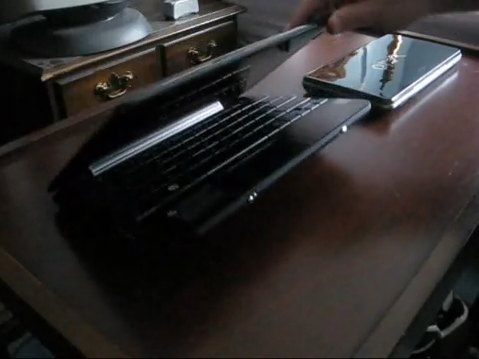 So as I mention in the video, this was easier to explain with a video than writing it, so consider this a video post!
So as I mention in the video, this was easier to explain with a video than writing it, so consider this a video post!
How about you dear readers; what is your preference on hinge strength and what advantages does it offer?
Posted on 19 March 2009, Last updated on 12 November 2019 by Steve Paine
 So as I mention in the video, this was easier to explain with a video than writing it, so consider this a video post!
So as I mention in the video, this was easier to explain with a video than writing it, so consider this a video post!
How about you dear readers; what is your preference on hinge strength and what advantages does it offer?
 |
| |||
 |
| |||
 |
| |||
 |
| |||
 |
| |||
 |
| |||
 |
| |||
 |
| |||
 |
| |||
 |
|
The perfect hinge strength (for me) [video] http://tinyurl.com/cjvsq6
Hinge strength that way aah I was thinking differently :) I lift/haul/move my devices many times at the monitor part and thought you we’re talking about that.
I like them stiffer as everything does get looser and loose to begin with what will it be like 1-2 yrs dwn the road?
I agree with EC,
Totally prefer strong/tight hinges. YOu can always add more force to open a stiff hinge, but with a weak hinge strength you can not really do much to stop wiggling.
SO while It would be convenient to open up one handed, I would definitely forgo that convenience to have to perform better down the road.
I also perfer the stronger hinge. I like the hinge strength on my MSI Wind. I use both hands to open, with no problem.
I too like stronger hinges so I don’t have a floppy display down the road.
I also vote for the stronge hinges, i have a tablet PC and you need a strong hinge, if you want to use the touch interface when not in slate mode.
Also on my Dell XT i have a strong hinge, but i can open with 1 hand, cause of the thingy that makes me screen rotate sticks out alittle on the back (dont know if it makes sens).
While it would be nice to be able to open the screen without holding the body down, such a light hinge could be too light to keep its position – eventually, or if the device has a touch screen. You could aim for the sweet spot, but would it be possible or worth it, considering the wear and tear that could eventually change that delicate balance between just right and too weak?
I prefer the hinge strength the way Ben demonstrated with the P. It’s so frustrating having to hold the body everytime just to open the thing (any laptop).
Strong hinges!
I don`t mind holding the body down while opening the device. A strong hinge not only helps with touch screens (when not in tablet mode) but also when working while moving in a train or plane. Especially train rides are not always as smooth as one would like (at least with the condition of the tracks found in most parts of Germany) an a weak hinge causes the screen to wobble around. This always makes me crazy.
So strong hinges for me!
I have an acer travelmate tci111,it can easely be open and close with one
hand like sony vaio,even beter(no need for two hands to unblock).
So,ben,nothing new under the sun.
just wanna say hello to you,my friend
I noticed that this is not the first time you write about this topic. Why have you chosen it again?
Видел что-то наподобие в англоÑзычном интернете, в РуÑÑкоÑзычном инете про такое как-то не оÑобо чаÑто поÑÑ‚Ñ‹ увидишь.
After having had to repair three laptop where usage over year has allowed the plastic around the hinges to fatigue and crack, I do like less stiff hinges. These laptops were never treated roughly nor were they ever opened from one side of the lid, which would put even more twisting force on the surrounds of the hinges. Have a close look at the plastic around your laptop hinges and see if there are small cracks there. Another indicator of fatique is if the hinge on one side is sloppier than the other. However, the damage may already have been done before any of these external indicators appear.
The basic problem is that older laptops had heavy lids, so requiring fairly stiff hinges to stop them dropping down under their own weight. That, coupled with under-engineered support for the hinges at the laptop body, means that the force required to operate operate the hinges is transferred to the hinge body interface, and eventually fatigues the plastic and it cracks.
Laptops meant for reliable, long term use will have securely fastoned hinges, which usually adds weight. The Lenovo T43s where I work have striong hinges, but they also weigh 2.3kg – four times the Vaio P.
The first Vaio P, as shown in the video, does slightly lift the body at the start, but doesn’t throughout most of its range. The newer design does not lift the body at all. The Ps have very light screens though, and thus do not need much friction in the hinge anyway.
With the trend to thinner, lighter lids, the need for stiffer hinges will decrease, thus allowing lighter hinge assemblies and anchor points and lower overall laptop weight.